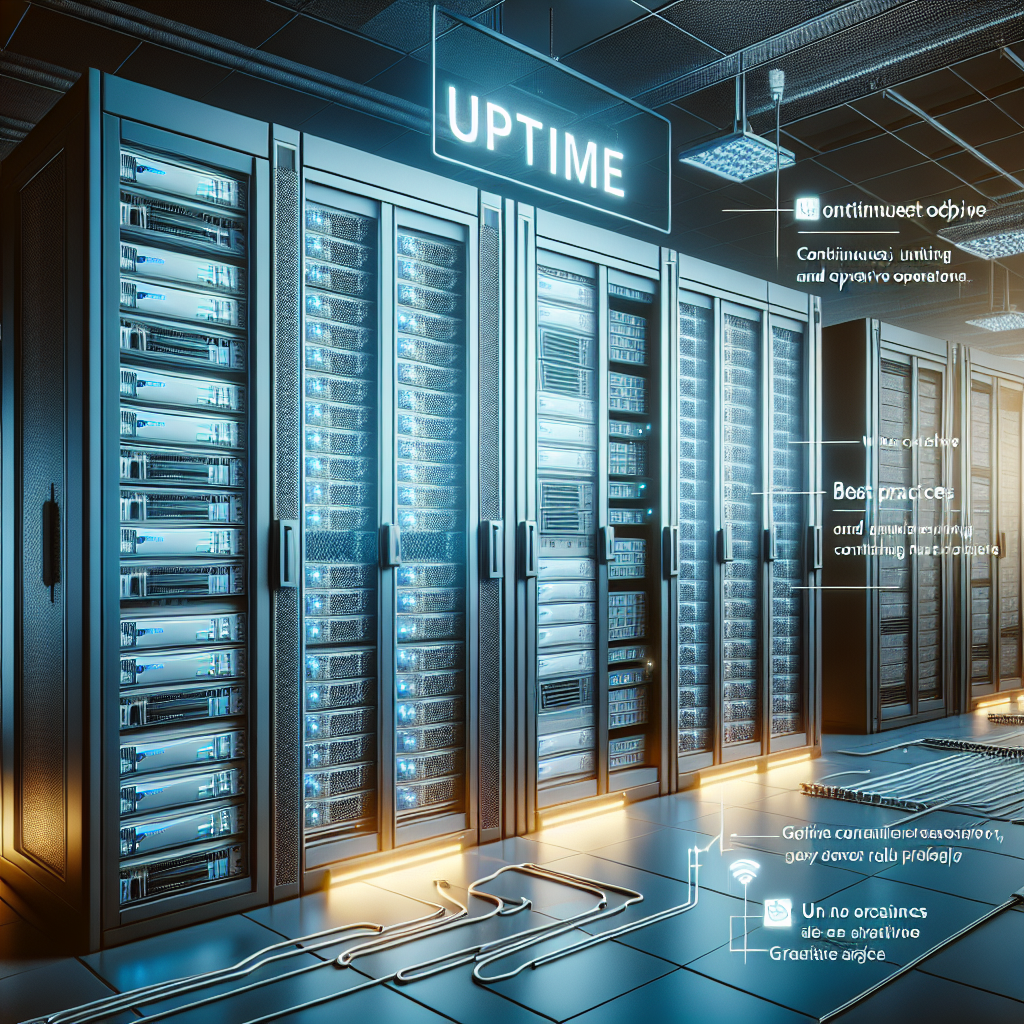Data centers are the heart of any organization’s IT infrastructure. They house critical servers, storage systems, and networking equipment that keep businesses running smoothly. However, with the increasing reliance on digital technologies and the rise of cloud computing, downtime in a data center can have serious consequences for a company’s operations and bottom line.
To ensure maximum uptime in a data center, organizations need to implement best practices and strategies that can help prevent outages and minimize disruptions. Here are some key steps that can be taken to achieve maximum data center uptime:
1. Redundant Power Systems: One of the most common causes of downtime in data centers is power outages. To mitigate this risk, it is essential to have redundant power systems in place. This includes backup generators, uninterruptible power supply (UPS) systems, and multiple power distribution units (PDUs) to ensure that critical equipment remains powered at all times, even in the event of a power failure.
2. HVAC and Cooling Systems: Data centers generate a significant amount of heat due to the high density of servers and other equipment. Without proper cooling systems in place, overheating can lead to equipment failure and downtime. To prevent this, organizations should invest in redundant HVAC systems, hot aisle/cold aisle containment, and temperature monitoring to maintain optimal operating conditions.
3. Regular Maintenance and Monitoring: Proactive maintenance is crucial for preventing downtime in a data center. Regular inspections, testing, and equipment upgrades can help identify and address potential issues before they escalate into full-blown outages. Additionally, real-time monitoring of key metrics such as temperature, humidity, power usage, and network traffic can provide valuable insights into the health of the data center infrastructure.
4. Disaster Recovery and Business Continuity Planning: Despite the best efforts to prevent downtime, unexpected events such as natural disasters, cyberattacks, or equipment failures can still occur. It is essential for organizations to have a comprehensive disaster recovery and business continuity plan in place to ensure that critical operations can be quickly restored in the event of a disruption.
5. Staff Training and Documentation: Human error is a common factor in data center downtime. To minimize this risk, organizations should invest in staff training programs to ensure that employees are well-versed in best practices for data center operations and maintenance. Additionally, documenting procedures and configurations can help streamline troubleshooting and recovery efforts in the event of an outage.
By implementing these best practices and strategies, organizations can significantly reduce the risk of downtime in their data centers and ensure maximum uptime for their critical IT infrastructure. Investing in redundancy, proactive maintenance, disaster recovery planning, and staff training can help safeguard against potential disruptions and keep business operations running smoothly.


Leave a Reply